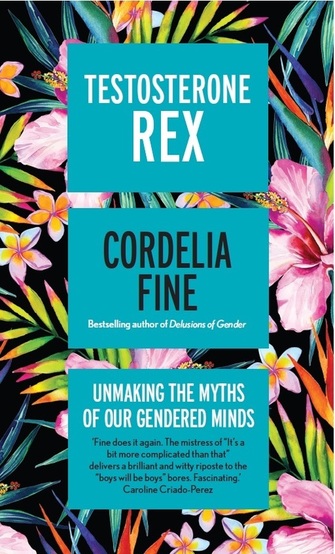Frequently Asked Questions
|
T-Rex refers to the powerful myth that squashes hopes of sex equality by telling us that men and women have evolved different natures. Fixed in an ancestral past that rewarded risk-taking, competitive men and careful, caring women, these differences are supposedly recreated in each generation by sex hormones – think males’ greater testosterone levels – and male and female brains. But how do the various assumptions of the myth stack up against the evidence?
“Evolutionary processes have differently shaped male and females natures in this way, because males can potentially produce a lot more offspring than females can” For decades, research from evolutionary biology has been challenging the old assumption that the cheapness of sperm inevitably creates competitive, promiscuous males and coy, caring females. Sex roles in the animal kingdom turn out to be surprisingly diverse and dynamic. Promiscuity is a ‘masculine’ trait Not only has the gender gap in interest in casual sex been closing over time, studies from Western samples suggest that the vast majority of men prefer to be in a sexually exclusive relationship. The standard T-Rex story is that men tend toward promiscuity because of the potential reproductive gains. But easily overlooked is that we humans are uniquely inefficient at producing offspring – we have more non-reproductive sex than any other species, meaning that any one sexual encounter has a very low probability of resulting in a baby. This makes the promiscuity route to reproductive success more time-consuming and effortful than is usually appreciated. “Men are risk-taking, women are risk-averse …” Overall, the data suggest that it would be more accurate to say that some men, in some contexts, from some populations, for some risks, are more risk-taking than some women, but for other contexts, populations, or kinds of risks, women tend to be at least as risk-taking as men. “… and it’s because men have higher testosterone levels” Read the answer to the question above again, then ask yourself whether the explanation “it must be men’s higher testosterone levels” seems satisfying … “There’s a ‘male brain’ and a ‘female brain’” Although there are average sex differences in the human brain, recent research suggests that these don’t ‘add up’ in a consistent ways to create two distinct kinds of brain (male and female), or even a continuum of brains, from ‘very male’ to ‘very female’. Instead, people develop idiosyncratic ‘mosaics’ of more male-typical and female-typical brain characteristics. This same study (published in Proceedings of the National Academy of Sciences) found that gendered attitudes, behaviors, and traits, also create ‘mosaics’ of ‘masculine’ and ‘feminine’ qualities within individuals. In other words, knowing whether someone is male or female doesn’t really help you predict either their brain structure or their psychological profile. “Some sex differences are innate – fixed, universal adaptations built into our biology.” The problem with this belief is that it bundles together properties – genetically fixed, universal, adaptive – that can in fact come apart from each other. Because development depends on a whole host of resources, not just genes, adaptive traits can develop or be expressed in some environments or situations, but not others. And although biological sex is a powerful and usually predictable influence factor when it comes to the development of our reproductive systems, the situation is much more complicated when it comes to the influence of biological sex on our brains. |
